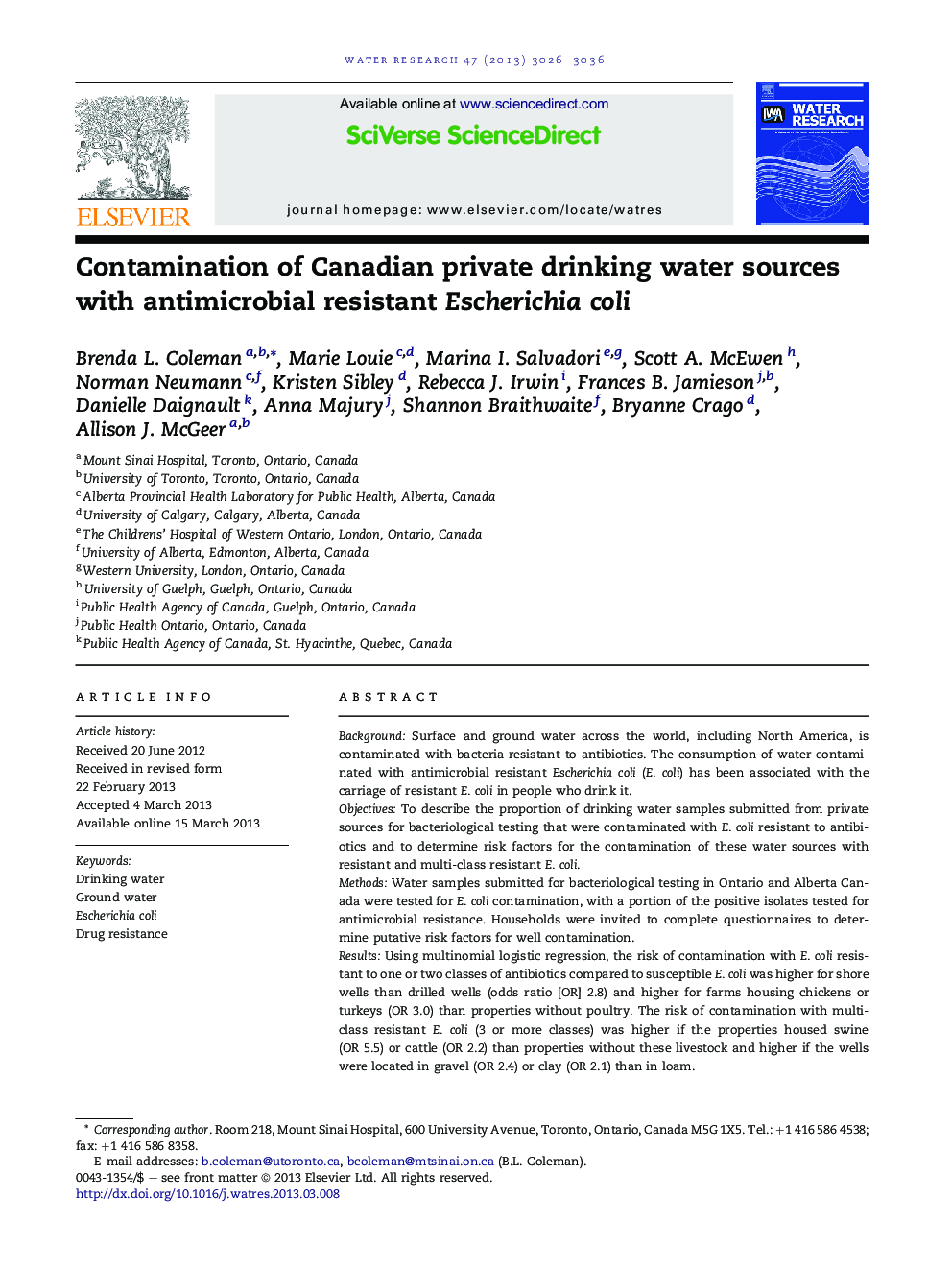| کد مقاله | کد نشریه | سال انتشار | مقاله انگلیسی | نسخه تمام متن |
|---|---|---|---|---|
| 4482118 | 1316848 | 2013 | 11 صفحه PDF | دانلود رایگان |

• 10.5% of Escherichia coli isolates from private drinking water samples in Canada were antimicrobial resistant.
• Livestock were a risk factor for contamination of private wells with antimicrobial resistant E. coli.
• Shore wells were at higher risk of contamination with antimicrobial resistant E. coli than dug, bored, or drilled wells.
BackgroundSurface and ground water across the world, including North America, is contaminated with bacteria resistant to antibiotics. The consumption of water contaminated with antimicrobial resistant Escherichia coli (E. coli) has been associated with the carriage of resistant E. coli in people who drink it.ObjectivesTo describe the proportion of drinking water samples submitted from private sources for bacteriological testing that were contaminated with E. coli resistant to antibiotics and to determine risk factors for the contamination of these water sources with resistant and multi-class resistant E. coli.MethodsWater samples submitted for bacteriological testing in Ontario and Alberta Canada were tested for E. coli contamination, with a portion of the positive isolates tested for antimicrobial resistance. Households were invited to complete questionnaires to determine putative risk factors for well contamination.ResultsUsing multinomial logistic regression, the risk of contamination with E. coli resistant to one or two classes of antibiotics compared to susceptible E. coli was higher for shore wells than drilled wells (odds ratio [OR] 2.8) and higher for farms housing chickens or turkeys (OR 3.0) than properties without poultry. The risk of contamination with multi-class resistant E. coli (3 or more classes) was higher if the properties housed swine (OR 5.5) or cattle (OR 2.2) than properties without these livestock and higher if the wells were located in gravel (OR 2.4) or clay (OR 2.1) than in loam.ConclusionsHousing livestock on the property, using a shore well, and having a well located in gravel or clay soil increases the risk of having antimicrobial resistant E. coli in E. coli contaminated wells. To reduce the incidence of water borne disease and the transmission of antimicrobial resistant bacteria, owners of private wells need to take measures to prevent contamination of their drinking water, routinely test their wells for contamination, and use treatments that eliminate bacteria.
Journal: Water Research - Volume 47, Issue 9, 1 June 2013, Pages 3026–3036